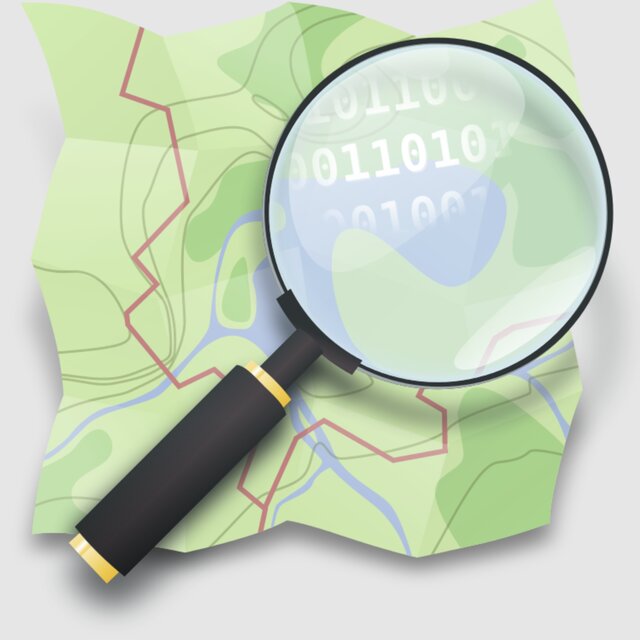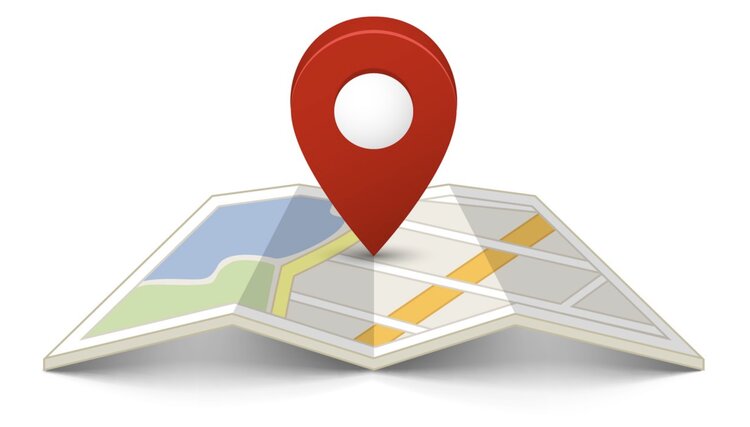OpenStreetMap is a digital database of the world. Also known as OSM, it’s the go-to resource for mapping, providing free geospatial data for anyone to use or contribute to. But while many businesses use OpenStreetMap to get POI location data for their apps, it isn’t always the best solution.
Ready to find out more? In this article we’ll look in detail at why businesses need POIs, the pros and cons of OpenStreetMap and why we think our solution might be the best alternative for your business.
Why businesses need POI location data
Businesses need accurate points of interest data for many reasons. It can be used to assess a location, understand visitors behaviour and inform marketing and selling strategies.
Location-based apps need POI location data to provide their users with accurate information. Whether a user is searching for a restaurant nearby, or looking for the nearest gas station, hotel, airport or more, they want to find the data they are looking for in your app.
So, with mapping data so vital for efficiency, why not just use OpenStreetMap to get it? Well, there are a few reasons why OSM isn’t always the best solution on its own – we will discuss this in the following sections.
The goods new is that POI data providers such as PlotProjects offer a complete out-of-the-box solution, making us an ideal alternative to OpenStreetMap API.

What is OpenStreetMap
OpenStreetMap (OSM) is defined as a free, open geographic database updated and maintained by a community of volunteers via open collaboration. Contributors collect its map data from scratch using surveys, aerial imagery and other geodata sources. That data is then entered into the OpenStreetMap database and released with an open-content licence, so anyone can source the data and use it in their maps or applications as long as they credit OSM.
The emphasis with OpenStreetMap is on local knowledge. Its mappers contribute data about local roads, trails, parks, cafes, restaurants and more, all around the world. These contributors span the gamut, from mapping enthusiasts, to GIS professionals, OSM engineers, humanitarians in disaster-struck areas, and more. Once the information is added, it’s used as map data for countless websites, mobile apps and navigation devices.
Does OpenStreetMap offer up-to-date POI data?
OSM works similarly to Wikipedia in that it is a crowdsourced knowledge project, constantly updated by contributors. However that doesn’t always make it the best source of up-to-date POI data. Being run and continuously updated by thousands of volunteers around the world means it can be hard to know if you have the latest POI data.
Up-to-date files would need to be constantly imported to your database. Alternatively, you could switch to an alternative provider such as PlotProjects. We continuously download fresh OSM data and make it accessible via an API.
How reliable is OpenStreetMap data?
OpenStreetMap is used by people all over the world to get free POI data, from individuals to businesses, governments and huge corporations. But while it’s widely used, it isn’t the best solution in every scenario where businesses need reliable location POIs.
Open source maps, especially those with a high volume of sources, can only be as reliable as the data that volunteers enter. Someone could update OSM with misleading and unreliable information. There can be also be issues supporting documentation and lack of quality checks performed on the data.
Again, these issues can be bypassed by using an OpenStreetMap alternative instead. Many POI providers offer a base layer of data from OSM combined with information extracted from other sources for more reliable POI data.
Is OpenStreetMap free?
Yes, OpenStreetMaps is ‘open-source’ and ‘open data’, meaning you are free to use it for any reason as long as you credit OSM and its contributors. While you don’t need to pay for access to OSM data, there might still be costs involved depending on how you use it, for instance, if you need to build your own servers or hire your own programmers.
Is OpenStreetMap legal?
Where you use OSM data, you are required to provide credit to OSM by displaying its copyright notice, and make clear that the data is available under the Open Database License (ODbL). You can find out more about how to credit OpenStreetMap here. If you edit or build upon the data, you may distribute the result under the same licence.
How to download OSM POIs
OSM has millions of points of interest, however it’s still possible for developers to get filtered point of interest data using its map features and elements. The map represents physical features such as roads or buildings using tags attached to its basic structures such as nodes, ways and relations.
Nodes represent points on the earth’s surface, each tagged with a classification, for instance a cafe would have a classification tag ‘amenity=cafe’, and in many cases a name and the kind of food served there. The node will also depict its latitude, indicating that there’s a cafe with that name, serving that food at those coordinates.
To get POI data from OSM you first need to identify which tags you’re interested in. You might want everything that’s tagged as a church, a museum or a restaurant. You can see a long list of common OSM tags on this map features page.
OSM data extraction methods
Once you’ve figured out what data you want, there are two ways you can get it out of OSM database.
You can use Overpass, a separate API with a powerful query language which allows you to fetch data matching certain tags. Or you can download the OpenStreetMap data dump and filter it according to your needs. This data dump is called planet.osm and you can use it download global data or just an extract covering one country or state.
Once you’ve downloaded it, you can use Osmosis or Osmfilter to extract the data for you, and output it into a file. Alternatively, you can load all the data into a local database with Osmosis or osm2pgsql, and then query the database for the features you want.

Disadvantages of using OpenStreetMap POIs
When sourcing POI data, many companies prefer to use free, open source solutions like OSM rather than pay a POI location data provider. However, there can be a hidden cost when it comes to using free data.
Providing your users with reliable, up-to-date and trustworthy data in their apps and tools is vital, whether they’re a shopper navigating to a store or a building association trying to find the best location for a new shopping mall. Providing them with free data won’t matter if they can’t rely on it to give them the information they need.
Low data quality can negatively impact user experience. Not to mention the time and resources involved in getting open source data into a format that you can actually use. OpenStreetMap API has been developed for the purpose of updating and editing maps and has basic functionality beyond that.
To use it for common POI related workflows, you will have to create the necessary infrastructure yourself using advanced technical knowledge. OSM also imposes strict limits on its usage policy.
Because of these issues, many users are looking for OpenStreetMap alternatives such as PlotProjects who offer this entire process out of the box.
PlotProjects vs OpenStreetMap API
Here we look at PlotProjects vs OpenStreetMaps compared, looking at the main aspects of accessibility, data completeness, freshness, usability and coverage.
Accessibility
As we’ve seen, there are numerous programs for extracting OSM data however the process can be lengthy and time consuming. PlotProjects POI API provides a much more streamlined process. While our data is not always free, it does not require the significant amount of time to search for and download POIs that OSM does. Get started with our free trial and see for yourself.
Coverage
When comparing the two solutions, PlotProjects POI data proves to be far more comprehensive. OpenStreetMap API relies on large groups of volunteers who work independently and without much coordination. The update cycle can be slow with a much lower percentage of data coverage than PlotProjects.
Using local and global sources, we provide comprehensive data coverage so you can benefit from a bigger and more reliable database.
Completeness
While locating POIs on a map is crucial, much of the their value comes from the data fill rate for fields such as business name, phone number, street address, website, opening hours and other attributes. Because OSM is crowdsourced, it is up to chance whether those fields are completed and there can be significant gaps.
Our solution is enriched with more detailed POI data and is available in an easy to use API. The PlotProjects POI service has many features and capabilities including an API for places search for ‘near me’ searches, autocomplete address for online forms, categories, geocoding and more.
Usability
It’s one thing accessing free mapping data, but can it be used for common POI related uses? Especially those that are integral in location-based apps, websites, analytics platforms and navigation devices. With OpenStreetMap API it can be difficult to conduct reliable hot spot analysis, proximity analysis, trade area analysis and more. This is due to data coverage issues, unreliable data and lack of tools to convert data.
In contrast, PlotProjects offers an out-of-the-box solution via an API. This makes it easy for your users to find the POIs they are looking for, and it also makes it easy for you to integrate into your app.
OpenStreetMap limits
Due to its open source nature, OSM has some limitations to its usage policy. More specifically, it requires no heavy uses and therefore limits the number of queries. This is why many developers are turning away from open source solutions to OSM alternatives such as PlotProjects who have no limits to usage.

PlotProjects as an alternative to OSM API
In terms of reliability, completeness, coverage and usability, the PlotProjects POI API excels in many of the areas where OSM doesn’t. Our full-featured solution enables search for addresses and points of interest across hundreds of categories globally, places nearby, with a places nearby feature for near me searches, and an autocomplete feature for predictive typing. We also offer the ability to easily search for points of interest using our geocoding API.
Why is PlotProjects better than OpenStreetMap?
- Easy to access: PlotProjects POI API makes data incredible easy to access. You no longer need to build separate advanced solutions to extract the data from OSM. We continuously download up-to-date OSM data and make it easy to access via an API and a stable web server. You no longer need to do all the hard work yourself when integrating our easy to use API.
- Ready to use: PlotProjects solution retrieves data which is pre formatted and standardized. Our solution makes it easy to find POIs and integrate them into your websites and apps. Our data is checked for quality and is ready to use instantly and easily, whether you’re gaining insights about a location, guiding a user to a restaurant nearby, or helping them complete an online address form.
- Scalable: OSM data is difficult to access in a scalable way. If you are an app developer and want all your users to access the data coming from OSM, then it would not be a scalable solution for this use case. As an alternative, the Plot API is a scalable solution for this.
- Enriched: We continue to enrich our POI data with more external sources.
- Up-to-date POIs: Your users want information based on the present moment, not the past, or based on a location that doesn’t exist. Everyday we download fresh files from OSM and refresh our data so that you get the most recent data. We process changes with speed so that data reaches your users as quickly as possible.
- Competitive pricing: Our POI pricing is based on API calls. We offer transparent pricing plans, including a free tier, to meet all of your needs. You can start using our free Geocoding API and free Address Autocomplete API by registering here. For more detailed information about pricing, contact us.
PlotProjects Point of Interest API – other features
Enhance you location databases with our Address Autocomplete API, ensuring accurate address data in your online forms. And accurately measure the distance between postcodes with our geocoding and reverse geocoding software.
Autocomplete address
Our autocomplete address software ensures that you capture accurate and verified address data in your online forms and checkouts. Providing a fast, convenient checkout process can help you increase conversions, eliminate bad data from your systems and prevent costly mistakes.
Easy to use, our Address Autocomplete API integrate easily into your apps and websites and can be used in a variety of online forms, applications and checkouts. Your customers can use it on an array of devices, from smartphones, to laptops, desktops and tablets.
See our address verification software in more detail, of find out more about what address autocomplete is in our handy guide.
Geocoding software
Geocoding is another important factor when it comes to accurate POIs. It is used in almost every app that interacts with a POI, street address or any mapping service. This is because humans can read street addresses, but computers only understand them as map coordinates such as latitude and longitude. In fact, most of the apps on your phone probably use geocoding in their mapping and search nearby functionalities, you just don’t realize it!
Here’s how it works. When you do a nearby search or type your street address into an online form, the app cannot actually read it. Geocoding works by turning the place you have typed into the geo-coordinates of a known address, place or locality, even if you typed an incomplete address. The app uses those coordinates to determine locations, but it shows you as the user the exact place or address you were looking.
Many POI location data providers including PlotProjects use geocoding combined with ‘search nearby’ and ‘address autocomplete‘ functionalities to enrich their datasets and quickly provide users with more helpful results and insights.
How to get started
PlotProjects has seen the growth in demand for accurate and up-to-date POI’s. We have launched our own Point of Interest API along with an address autocomplete API with all the features you need to build instant and accurate address lookup and autofill solutions into your online forms and checkouts.
Check out our other solutions too. Our extensive geofencing SDK is quick to set up and easy to use, offering all the tools you need to build and manage your campaigns. Get in touch today to find out more!
